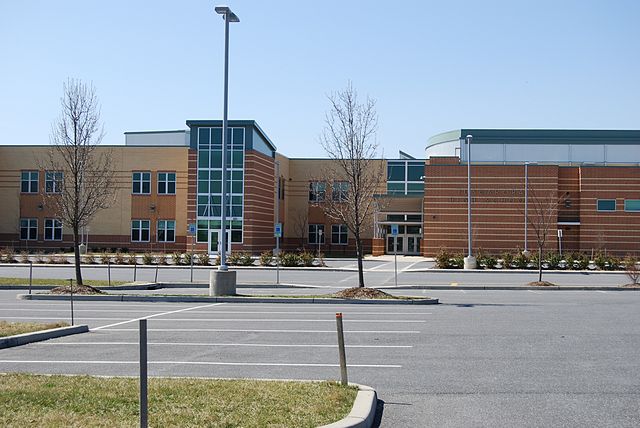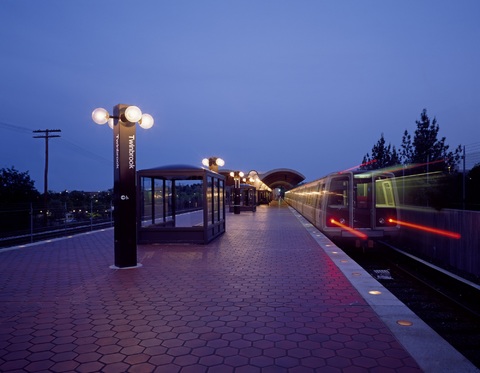Approved State Budget Makes Greater Investments in Maryland’s Priorities
With the most recent state revenue forecasts coming in $400 million higher than originally anticipated, the Maryland General Assembly had a little more flexibility than in recent years to restore cuts proposed in the governor’s budget. Lawmakers have also passed some legislation that increases investments in key public priorities like education, transportation, and economic security.
Pre-K-12 Education
In January, Gov. Hogan submitted a budget proposal that included few new investments in education and doubled down on a number of harmful cuts he has attempted in the past. In contrast, the adopted budget makes significant progress on Maryland’s education needs. Still, it leaves us far behind the public school system our children deserve.
Here are some of the areas where the General Assembly improved on the governor’s budget:
- Set aside $207 million for implementing the recommendations of the Commission on Innovation and Excellence in Education (Kirwan Commission), which is reviewing the state’s education funding formula. Most of this funding is reserved for future years, after the commission makes its final recommendations. A smaller portion is earmarked to fund a “down payment” bill currently making its way through the legislature.
- Restored funding for after-school programming, building our supply of qualified teachers, and supporting low-income students on the path to college. Gov. Hogan’s budget proposal cut a total of $19.25 million from these areas.
- Made a small reduction to the governor’s proposed funding increase for BOOST program, which diverts public money to private schools. In light of evidence that this program is not working as intended, it’s smart to invest our shared resources in the public schools that serve most Maryland children.
The legislature also added significant new funding for school facilities, much of it in response to recent crises:
- $15 million for heating and air conditioning improvements, prompted by frigid conditions this winter in many Baltimore schools.
- $13.5 million for improvements to school safety features ($10 million in public schools, $3.5 million in private schools), prompted by school shootings in Florida and at Great Mills High School in St. Mary’s County.
- $28.2 million in supplemental facilities funding for the state’s fastest-growing school districts.
- $4.9 million for a statewide review of school facility conditions.
Even with these improvements, Maryland schools have considerable unmet needs:
- As of 2015, the state and counties underfunded public schools to the tune of $1 billion per year, according to state fiscal analysts, and status-quo budgets since then have done little to change this.
- Thanks to increasingly ambitious academic standards—a good thing, if they are backed with realistic funding—we are now about $3 billion per year behind the funding level that would be required to provide every child an education that meets state standards.
- State data show that Maryland school buildings are aging faster than we are replacing them. Fourteen of the state’s 24 school systems saw the average age of their schools increase from fiscal year 2016 to 2017, and schools in all but one school system were older on average in 2017 than five years earlier.
- Schools in low-income areas and schools that serve large numbers of students of color are hit hardest—reinforcing the barriers many students face, rather than dismantling them.
The adopted budget makes incremental progress, but we still need to make fundamental reforms to guarantee every child a world-class education.
Higher Education
The General Assembly made less far-reaching changes to state support for higher education. The legislature restored $15 million in cuts proposed in the governor’s budget:
- $6 million for the Baltimore County and College Park campuses of the University of Maryland
- $7.4 million in grants to private universities.
- $851,000 for Baltimore City Community College
The adopted budget also includes $4 million in added funding for facilities improvements at private universities and changes the projects receiving capital funding in the University System of Maryland.
Transportation
The biggest changes in the state’s investment in transportation are coming through separate legislation. The legislature voted to provide significant additional investment in the Metrorail system as part of an effort in the Washington, D.C., region to make much-needed repairs to the system. This legislation also includes some additional support for transit for the Baltimore region and other parts of the state.
In addition, the legislature passed a bill that will provide local governments with more state funds for road maintenance and other transportation needs starting in the following budget year, which will begin in July 2019. Since the Great Recession, much of the money from the state’s gas tax that used to support local projects was diverted to other areas of the budget.
Aside from these major changes, the legislature made few adjustments to the governor’s proposed investments in transportation. Overall, Governor Hogan’s transportation budget made slight increases in investment into Maryland’s transportation infrastructure. However, these investments essentially maintain the status quo while nearly a quarter of Maryland’s roads are rated in poor condition and transit users see cuts in service while agencies make emergency repairs.
Increasing Maryland’s public investment into the state’s transportation infrastructure would benefit all of us. It makes the state more attractive to businesses and saves Marylanders time and money, with the costs of driving on roads in need of repair averaging $550 per year.
Health Care
The legislature reversed the most significant proposed cuts in the governor’s budget, which would have made it harder for people who get health care through Medicaid to access services. Governor Hogan proposed smaller than planned increases in the reimbursement rates for providers that serve people with behavioral health care needs, people with developmental disabilities, nursing home residents, and other service providers. The General Assembly had previously passed legislation to require 3.5 percent annual increases in certain provider rates to make up for prior years when reimbursement rates stayed flat. Maintaining adequate reimbursement rates is essential to ensure providers, whose cost of doing business generally rises with inflation, can afford to continue to see clients who rely on Medicaid for their health coverage.
The final budget restores most provider rate increases to 3 to 3.5 percent – including behavioral health, developmental disabilities, and nursing homes – while rates for some other human services providers will increase by 1 percent.
The legislature also restored proposed cuts to funding for local health departments and a state grant to support a new research hospital in Prince George’s County.
Human Services
Though most critical programs within the Department of Human Services remain level funded, after accounting for expected drops in enrollment, many threats to the programs that help Maryland’s most vulnerable residents get by still exist.  The legislature added requests for information to the budget to get information about how federal changes to food assistance and family income supports will impact the programs’ operations in Maryland. Throughout the budget process, legislators also expressed concerns about unexplained caseload reductions, slow processing times and high application denial rates for some programs.
The legislature added requests for information to the budget to get information about how federal changes to food assistance and family income supports will impact the programs’ operations in Maryland. Throughout the budget process, legislators also expressed concerns about unexplained caseload reductions, slow processing times and high application denial rates for some programs.
The legislature took positive steps to reduce food insecurity in Maryland by adding an additional $500,000 in funding for the School Pantry Program and providing $200,000 in funding for the Maryland Farms and Families Act, which provides matching funds for people who receive assistance through the Supplemental Nutritional Assistance Program (SNAP) when they shop at farmers’ markets. Funding for Maryland Farms and Families is a win for SNAP recipients, who are able to afford more fresh and healthy foods, and for Maryland’s farmers, who benefit from the extra money spent on local produce. With the future of federal nutrition assistance programs uncertain, Maryland should continue to invest in programs that help vulnerable Marylanders access the food they need to stay healthy.
Housing and Community Development
The adopted budget modestly increases capital investments in housing and community development over the governor’s budget. Total funding increases by about $16 million over the current fiscal year, compared to a $1 million reduction in the governor’s budget.
The General Assembly restored $9 million out of $14 million in proposed cuts to the Department of Housing and Community Development’s capital appropriation. This includes:
- $4 million for the Seed Community Development Anchor Institution Fund, which provides loans to major institutions like universities and hospitals that can create jobs and growth in struggling areas. The adopted budget restores 80 percent of the funding cut by the governor and funds this program for the first time since its creation in 2016.
- $5 million for the Baltimore Regional Neighborhoods Initiative, which aims to increase the tax base and quality of life in the Baltimore area through coordinated investments in targeted neighborhoods. The adopted budget restores more than half of the funding cut by the governor, maintaining the program’s funding at its level for the current fiscal year.
The legislature also added $8 million in new funding to the Housing and Community Development capital budget:
- $5 million to build and rehabilitate affordable rental housing, a 12.5 percent increase over the governor’s budget.
- $2 million for the Community Legacy Program, which finances revitalization projects in neighborhoods that the state deems to be at risk of physical, economic, or social deterioration. This is a 33.3 percent increase over the governor’s budget.
- $1 million for the National Capital Strategic Economic Development Fund, which the General Assembly created last year to finance projects in designated sustainable communities, primarily inside the capital beltway. This is the first time the fund will have money in it.
Economic Development
The adopted budget for economic development closely resembles the governor’s proposal, which significantly increased funding for a number of development incentive programs. Unfortunately, the state’s own analysis has shown that these programs generally do little to grow Maryland’s economy, while funneling millions from the state government to large corporations. This makes it harder to invest in things like schools, hospitals, roads, and transit that make us more prosperous in the long run.
While the General Assembly did not significantly change the economic development budget for the upcoming fiscal year, it did authorize a massive new set of tax breaks in hopes of luring Amazon’s second headquarters. With $31 billion cash on hand, Amazon does not need help in financing its new headquarters. If the commerce giant chooses Montgomery County for its new base—which it has ample reason to do already, given the region’s endowments in skilled workers, multimodal transportation, and elite universities—the incentive package is projected to cost the state $5.6 billion over several decades. Here’s what the state is offering Amazon:
- The company would get to keep all state income taxes paid by most of its employees, plus a little bit more.
- The company would not owe sales and use taxes on any equipment it purchases for the facility.
- The company would get a 50 percent discount on state and local property taxes.
Environment
Governor Hogan’s original budget for fiscal 2019 level funded or increased funding for most environmental programs, including those that support the Chesapeake Bay. Even after the legislature made minor cuts, environmental, agricultural, and natural resource programs will receive a 1.9 percent increase in state funds. With federal environmental programs that support the Bay under threat of funding cuts or elimination, it is critical to continue state investments to protect Maryland’s natural resources.
The supplemental budget also includes an extra $500,000 for the current budget year to provide funds to support oyster seeding projects and more than $1 million in additional funds for the Maryland Park Service. Ensuring that Maryland’s parks and aquatic ecosystems are well maintained is critical to the high quality of life that allows Maryland to attract a valuable workforce.
Public Safety
The approved public safety budget reflects a minimal shift in priorities, as a record low in the correctional facility population gives the state the opportunity to make new investments in programs that keep people out of the prison system and help formerly incarcerated individuals successfully return to their communities. The legislature made very minor changes to the governor’s public safety budget.
The budget for the Department of Public Safety and Correctional Services includes $1.4 billion to house and rehabilitate 19,000 inmates (the lowest population since 1992), detain people who have been arrested and people awaiting trial, and supervise nearly 70,000 individuals in the community who are on parole or probation.
Although there is a minimal increase in the police aid to local governments and municipalities, appropriation for local law enforcement grants increased by 19 percent from FY 2018 ($29.4 million) to FY 2019 ($35.3 million). Additional budget increases include spending to upgrade and replace State Police vehicles. Since FY 2015, spending has totaled $40 million and in FY 2018, funding was at $7 million. In FY 2019, the budget has been increased to $8.2 million, representing a 17 percent increase from FY 2018.
The legislature added $5 million to the budget to support violence prevention and intervention programs that aim to keep people from going to jail or prison in the first place. Given that Maryland’s correctional population has hit a 26-year low, Maryland should take the opportunity to investment in more programs and services like these. Ensuring that Marylanders have access to jobs that offer a living wage and stable housing are also important public investments that would make Maryland a state that is smart on crime while also growing our economy.



